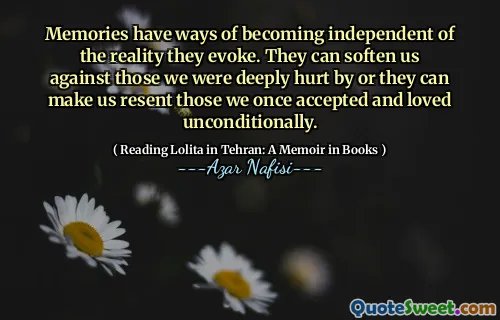
In his forward to the English edition of Invitation to a Beheading {1959}, Nabokov reminds the reader that his novel does not offer 'tout pour tous.' Nothing of the kind. 'It is,' he claims, 'a violin in the void.' {...}There was something, both in his fiction and in his life, that we instinctively related to and grasped, the possibility of a boundless freedom when all options are taken away. I think that is what drove me to create the class. My main link with the outside world had been the university, and now that I had severed that link, there on the brink of the void, I could invent the violin or be devoured by the void.
📖 Azar Nafisi
In her memoir, Azar Nafisi reflects on Vladimir Nabokov's assertion that his work is not universally accessible, describing it as "a violin in the void." This metaphor captures the essence of navigating a seemingly empty space where freedom emerges from the absence of options. Nafisi connects to this idea, recognizing that within limitations lies the potential for creativity and self-discovery.
After distancing herself from the university, Nafisi confronts the void, which symbolizes both a challenge and an opportunity. The act of creating, akin to playing a violin amidst emptiness, becomes her means of survival and expression. Through her journey, she illustrates the profound relationship between restrictive circumstances and the pursuit of artistic and personal freedom.











